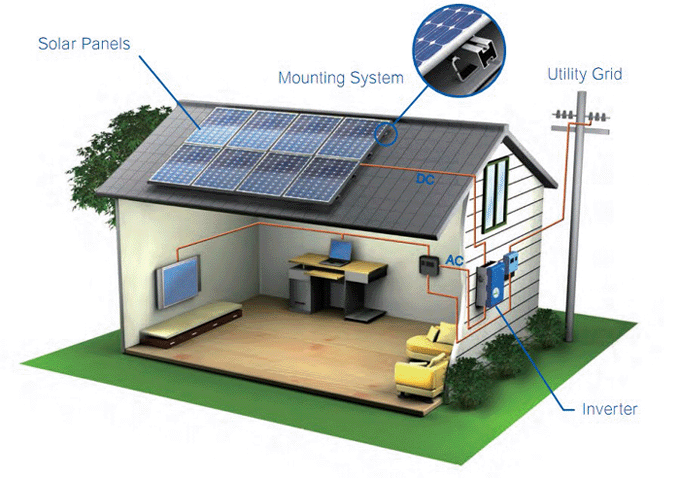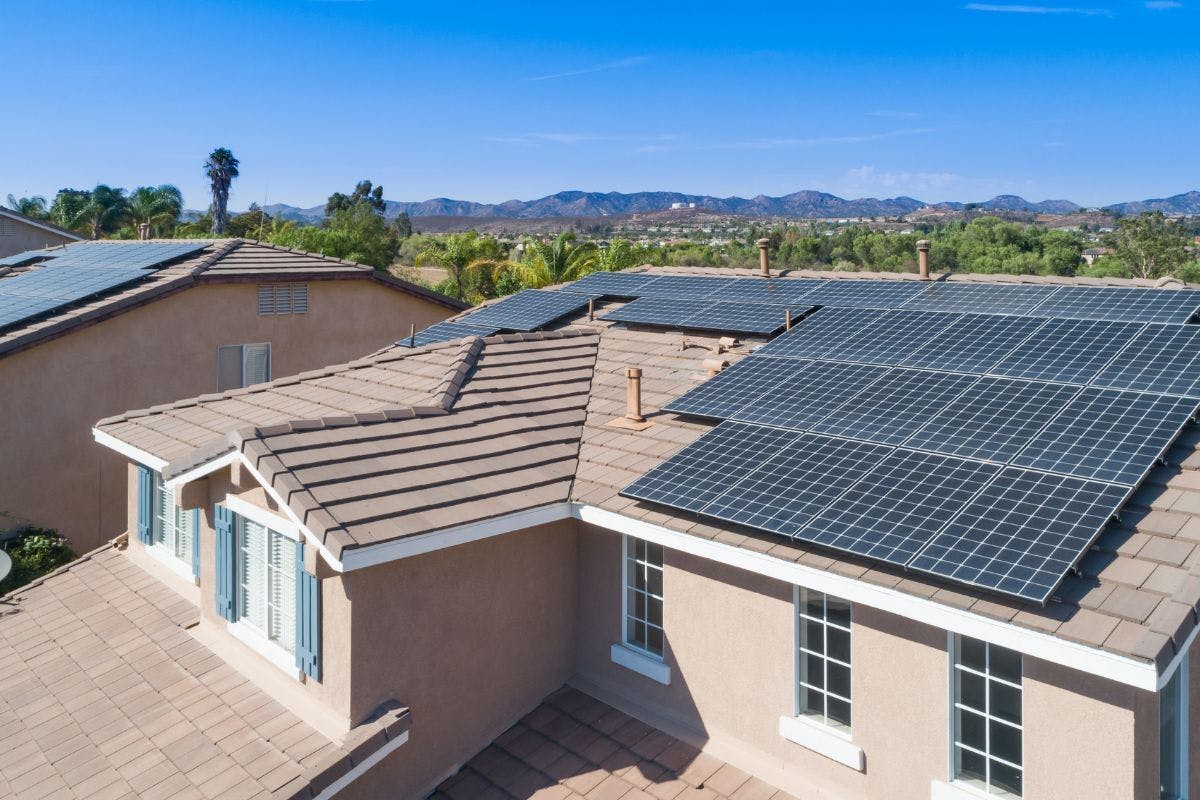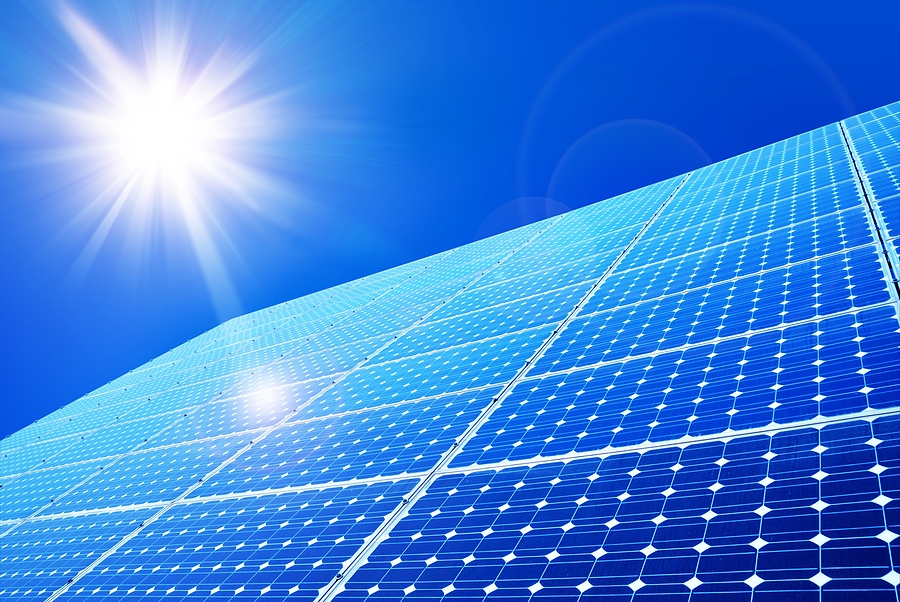Typical Timeline for a Complete Solar Installation Project
Wiki Article
Exploring the Different Kinds Of Solar Panels and Their Special Advantages
The landscape of solar panels uses different options, each with distinct benefits matched to different applications. Monocrystalline panels stand apart for their efficiency and visual appeals, while polycrystalline versions interest budget-conscious consumers. Thin-film technology gives adaptability in installation. Ingenious layouts like building-integrated and bifacial photovoltaics further enhance the appeal of solar power. Understanding these differences is important for making informed choices. The concern remains: which kind will best meet specific power requirements?Monocrystalline Solar Panels
Numerous kinds of solar panels are readily available, monocrystalline solar panels are often regarded as the most efficient choice. These panels are made from a solitary crystal framework, commonly silicon, which allows them to convert sunlight right into power better than various other types. The efficiency rates for monocrystalline panels can vary from 15% to over 22%, making them a preferred option for commercial and property setups where room is limited.
Polycrystalline Solar Panels
Polycrystalline solar panels are created making use of a distinct production procedure that includes melting several silicon crystals together. This technique can cause advantages such as reduced production prices, making them a popular option for lots of customers. Nonetheless, their efficiency and efficiency aspects may vary compared to other kinds of solar panels, calling for mindful factor to consider.Production Refine Advantages
The manufacturing process of polycrystalline solar panels provides several benefits that contribute to their allure in the renewable resource sector. The manufacturing uses silicon scrap, which decreases waste and reduces material prices, making it financially viable. Unlike monocrystalline panels, the production of polycrystalline panels includes easier and less energy-intensive strategies, resulting in a smaller carbon footprint. Additionally, the spreading process allows for the development of multiple cells concurrently, boosting effectiveness in production. This method likewise brings about a more consistent structure, which can enhance the general efficiency and longevity of the panels. As a result, polycrystalline solar panels present an affordable remedy for consumers while advertising sustainable manufacturing techniques within the sector.Effectiveness and Performance Variables
How do effectiveness and performance factors influence the performance of polycrystalline solar panels? These panels commonly show reduced effectiveness prices, balancing around 15-20%, compared to their monocrystalline counterparts. Variables such as temperature level level of sensitivity, shading, and the angle of installation considerably influence their performance. Polycrystalline panels have a tendency to execute much better in cooler environments but may battle in heats, leading to minimized result. In addition, their efficiency can be affected by dirt and particles buildup, requiring normal maintenance. In spite of these difficulties, polycrystalline panels are a lot more economical and use a strong equilibrium in between cost and efficiency. Recognizing these effectiveness and efficiency aspects is important for customers looking for to take full advantage of solar power production and general system performance.Thin-Film Solar Panels
Thin-film solar panels stand for a light-weight and versatile choice in the solar power landscape. These panels are created by transferring one or even more thin layers of solar material onto a substrate, which can consist of metal, plastic, or glass. This production process permits greater adaptability in style and applications contrasted to conventional crystalline solar panels.
Thin-film modern technology generally features reduced effectiveness rates, yet it makes up for this with reduced manufacturing expenses and enhanced efficiency in low-light conditions. Their light-weight nature makes them appropriate for installation on different surfaces, consisting of curved structures and automobiles. Additionally, these panels can be incorporated into structure materials, providing visual advantages alongside energy generation.
Bifacial Solar Panels
Bifacial solar panels are gaining interest for their boosted efficiency and performance, as they can record sunshine from both sides. This dual-sided design enables increased energy production, especially in reflective settings. Furthermore, their installation uses possible cost advantages, making them an eye-catching choice for numerous applications.Effectiveness and Performance
The effectiveness and performance of solar panels are essential aspects in establishing their effectiveness in energy generation, with bifacial solar panels standing out for their innovative style. These panels include solar batteries on both sides, permitting them to catch sunlight from several angles. This dual-sided capacity improves power outcome, especially in settings with reflective surface areas, such as snow or sand. Bifacial solar panels can raise power manufacturing by 10-20% contrasted to typical monofacial panels. Their capacity to harness indirect sunlight adds to their total effectiveness, making them a compelling option for numerous applications. Additionally, advancements in innovation remain to boost their performance metrics, solidifying their location in the eco-friendly energy landscape as an extremely effective option for solar power generation.installation and Cost Advantages
When taking into consideration the benefits of bifacial solar panels, the installation procedure and cost benefits are considerable aspects that can affect decision-making for both residential and business applications. Bifacial panels can be placed on numerous structures, including rooftops and ground setups, enabling flexible implementation. Their ability to soak up sunshine from both sides improves power generation without calling for extra panels. This performance can lead to minimized total installation prices, as less systems may be required to attain wanted power results. Furthermore, their longevity often translates to lower upkeep expenditures over time (Residential Solar Installation). Consequently, the long-term monetary benefits, combined with installation flexibility, make bifacial solar panels an enticing option for those looking for sustainable power remediesBuilding-Integrated Photovoltaics (BIPV)
Building-Integrated Photovoltaics (BIPV) stand for a significant development in solar technology, seamlessly including solar batteries right into building materials such as roofing systems, home windows, and frontages. This ingenious method not only produces renewable resource however likewise boosts the aesthetic appeals and capability of buildings. BIPV systems can change traditional structure products, decreasing the general expense of building and construction while adding to energy effectiveness.The assimilation of solar technology into architectural design enables far better room use, as these systems can be installed without calling for extra land. In addition, BIPV services are adjustable, making it possible for architects to produce special designs that match the structure's overall look. The double performance of BIPV-- serving both as a power generator and an architectural part-- provides substantial benefits in city settings where space is limited. As recognition of sustainable structure techniques grows, BIPV is becoming a significantly attractive choice for programmers and property owners alike.
Concentrated Photovoltaic (CPV) Solutions
Concentrated Photovoltaic (CPV) systems represent a sophisticated solar technology that makes use of lenses or mirrors to focus sunlight onto high-efficiency solar batteries. This ingenious strategy enables the collection of substantially more solar power than typical photovoltaic or pv systems. By concentrating sunshine, CPV systems can accomplish greater efficiencies, typically surpassing 40%, making them especially ideal for locations with high straight sunshine.In addition, CPV systems typically require much less land area compared to conventional photovoltaic panels, as they produce even more power from a smaller sized impact. These systems frequently integrate tracking systems that readjust the placement of the lenses or mirrors to follow the sun's movement, making best use of power capture throughout the day. Nonetheless, CPV innovation is finest suited for particular geographical locations, where straight sunshine is plentiful, restricting its applicability in regions with frequent cloud cover. On the whole, CPV systems present a promising option for boosting solar power production that site in ideal atmospheres
Comparison of Photovoltaic Panel Efficiency and Price
Although numerous photovoltaic panel innovations exist, their effectiveness and cost can substantially vary, influencing consumer selections and market dynamics. The most usual types-- polycrystalline, thin-film, and monocrystalline-- show distinctive features in performance and rates. Monocrystalline panels have a tendency to supply the highest possible performance rates, commonly exceeding 20%, yet they usually feature a higher price. In contrast, polycrystalline panels are normally more inexpensive, with performances around 15-20%, making them a prominent selection for budget-conscious consumers. Thin-film innovations, while much less efficient at roughly 10-12%, provide versatility and reduced installation costs, appealing to details applications.Inevitably, picking the appropriate solar panel entails weighing the balance in between efficiency and expense. Customers have to consider their energy needs, budget plan restraints, and long-term savings capacity, as these aspects will dictate the ideal choice for their solar power system.
Regularly Asked Questions
Exactly How Lengthy Do Solar Panels Generally Last Before Requiring Substitute?
Solar panels commonly last in between 25 to three decades before needing replacement. Their toughness relies on numerous factors, including high quality, setup, and local environmental conditions, which can impact their efficiency and durability over time.
Can Solar Panels Job in Cloudy or Rainy Issues?
Solar panels can indeed function in wet or cloudy problems, albeit at reduced performance. They still record diffuse sunlight, permitting power generation, though power outcome may be considerably reduced than on sunny days.What Upkeep Is Needed for Solar Panels?
Regular maintenance for solar panels consists of look at this web-site regular cleansing to eliminate dirt and debris, evaluating for damage, ensuring links are secure, and reviewing system efficiency. Routine check-ups can boost effectiveness and lengthen the life expectancy of the panels.Exist Any Kind Of Environmental Influences From Manufacturing Solar Panels?
Yes, making solar panels can have environmental effects, including resource removal, energy intake, and waste generation. Nevertheless, innovations in modern technology objective to decrease these effects, advertising more my latest blog post lasting methods in manufacturing and recycling processes.Just how Do I Choose the Right Solar Panel for My Home?

Various types of solar panels are available, monocrystalline solar panels are usually pertained to as the most reliable alternative. Thin-film solar panels represent a light-weight and flexible choice in the solar energy landscape. The efficiency and efficiency of solar panels are crucial aspects in establishing their performance in energy generation, with bifacial solar panels standing out for their cutting-edge style. Building-Integrated Photovoltaics (BIPV)
Building-Integrated Photovoltaics (BIPV) represent a significant evolution in development technology, seamlessly incorporating solar including into building right into structure products roofing systems, facades, home windows roofs. Concentrated Photovoltaic (CPV) systems represent an innovative solar modern technology that uses lenses or mirrors to concentrate sunlight onto high-efficiency solar cells.
Report this wiki page